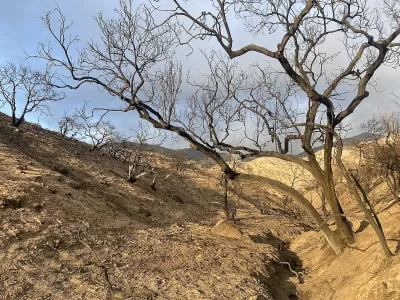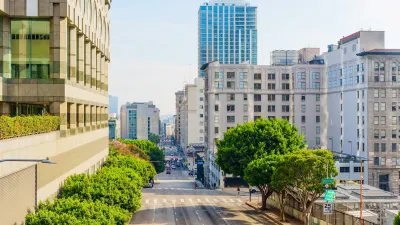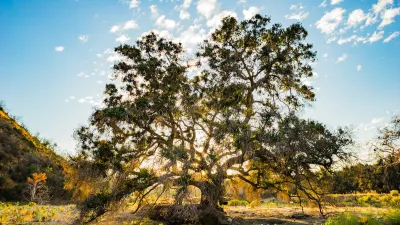In the wake of the Eaton Fire, Altadena Green is working to preserve fire-damaged but recoverable trees, advocating for better assessment processes, educating homeowners, and protecting the community’s urban canopy from unnecessary removal.

In the aftermath of the Eaton Fire, many Altadena residents who lost their homes are now fighting to save their trees from removal. The fire left countless trees scorched but still viable, yet ongoing debris cleanup threatens to cut down many that could recover with time and care. As reported by Erin Stone, to combat this, Altadena Green—a group founded by residents, arborists, and landscape experts—is working to assess trees marked for removal, educate homeowners, and advocate for preserving as much of Altadena’s tree canopy as possible. Residents like Wynne Wilson, whose fire-resistant garden was a community landmark, view tree preservation as essential to maintaining the identity and environmental resilience of the neighborhood.
Despite community efforts, many trees are at risk due to conflicting oversight from agencies managing post-fire cleanup. The Army Corps of Engineers, responsible for clearing private properties, has marked trees for removal using a controversial process that residents say lacks transparency. While homeowners can request to keep certain trees, the decision ultimately rests with contractors who may deem them hazardous. Advocates argue that local arborists should lead these assessments, as some trees, such as coast live oaks and Canary Island pines, have a strong chance of survival. The removal of too many trees could also worsen urban heat island effects, drastically changing Altadena’s climate.
To help homeowners navigate this process, Altadena Green provides resources on tree health assessments, retention requests, and alternative debris removal options. Experts caution against premature tree removal, advising residents to check for live bark before assuming a tree is dead. Research shows that fire-resistant trees can actually slow the spread of flames if properly spaced. While the fire was primarily driven by embers igniting buildings, preserving the remaining greenery represents resilience and recovery for Altadena. As the community rebuilds, protecting its beloved trees remains a crucial part of healing and adaptation.
FULL STORY: After the Eaton Fire, this group is working to save Altadena’s surviving trees

Planetizen Federal Action Tracker
A weekly monitor of how Trump’s orders and actions are impacting planners and planning in America.

Trump Administration Could Effectively End Housing Voucher Program
Federal officials are eyeing major cuts to the Section 8 program that helps millions of low-income households pay rent.

The 120 Year Old Tiny Home Villages That Sheltered San Francisco’s Earthquake Refugees
More than a century ago, San Francisco mobilized to house thousands of residents displaced by the 1906 earthquake. Could their strategy offer a model for the present?

Washington State Legislature Passes Parking Reform Bill
A bill that would limit parking requirements for new developments is headed to the governor’s desk.

Missouri Law Would Ban Protections for Housing Voucher Users
A state law seeks to overturn source-of-income discrimination bans passed by several Missouri cities.

Op-Ed: Looking for Efficiency? Fund Intercity Buses
Much less expensive than rail, intercity buses serve millions of Americans every year, but public subsidies are lacking.
Urban Design for Planners 1: Software Tools
This six-course series explores essential urban design concepts using open source software and equips planners with the tools they need to participate fully in the urban design process.
Planning for Universal Design
Learn the tools for implementing Universal Design in planning regulations.
Ada County Highway District
Clanton & Associates, Inc.
Jessamine County Fiscal Court
Institute for Housing and Urban Development Studies (IHS)
City of Grandview
Harvard GSD Executive Education
Toledo-Lucas County Plan Commissions
Salt Lake City
NYU Wagner Graduate School of Public Service





























